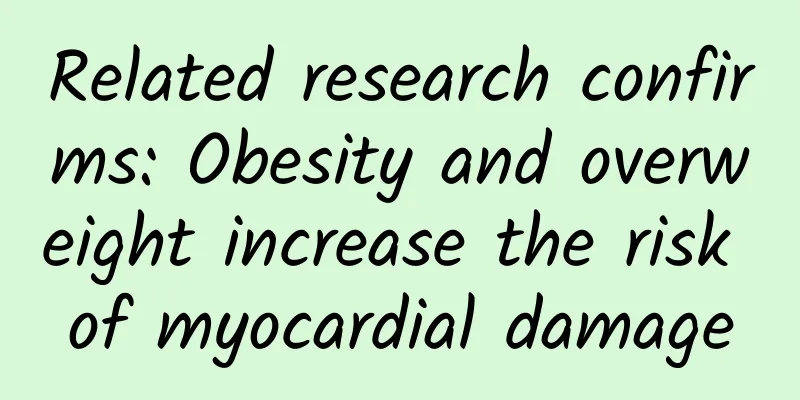What are the hazards of nuclear waste water?

|
Recently, the news that Japan decided to discharge nuclear waste into the Pacific Ocean has become the focus of everyone's attention. After all, everyone knows more or less about the power of nuclear weapons. Some experts even claim that Japan's nuclear waste water can cause "three hazards" - carcinogenicity, teratogenicity and mutagenicity. In other words, the impact on humans is very large. If this matter is really unavoidable, then how can we minimize the damage? The first thing we need to understand is what impact nuclear waste water has on human genes? First, if we follow the order, it should be based on mutagenesis, and the consequences may be carcinogenicity and teratogenicity. First, mutagenesis is the basis The nuclear radiation we often talk about is essentially a kind of radiation, which is a microscopic particle flow released when the structure or energy state of the atomic nucleus changes. These particle flows can cause other substances to ionize or excite, so they are called ionizing radiation. Therefore, nuclear radiation is essentially an ionizing radiation process. For life, there are mainly a few large molecules, which are easily attacked and changed. If it happens to fat and protein, it is actually not a big deal, because these substances themselves are products of synthesis/absorption and tend to be metabolized quickly in the body, so they will be metabolized quickly after the reaction occurs. The most troublesome thing happens to nucleic acids (DNA/RNA). Because nucleic acids are the basis of life, we can get the basic status of nucleic acids from the central dogma we are familiar with. Once nucleic acid mutates, it may cause an impact. After all, radiation may directly attack the bases on nucleic acid, causing gene mutation. If it is a neutral mutation, it is fine. After all, neutral mutation is a relatively common occurrence, and our evolution is mainly based on neutral mutation (the neutral evolution theory of Motoo Kimura is commonly seen). If it occurs in the promoter region, it may affect the efficiency of nucleic acid replication and transcription. If it occurs in the CDS region, it is very likely to cause changes in the encoded protein, etc. These changes will further manifest themselves on individuals. Secondly, teratogenicity Teratogenicity is an important effect. Individual development is very susceptible to the influence of the external environment. For example, as we all know, pregnant women cannot be exposed to X-rays because they are worried that nuclear radiation will cause fetal malformations. Similarly, many drugs are prohibited for pregnant women for the same reason. The problem is that during fetal development, every factor may produce unpredictable results. For a fetus, it is in a rapid process of developing from 1 to an individual, from a fertilized egg to billions of cells. Most of the cells in the middle will replicate and proliferate. If a cell is affected by radiation, it will replicate and pass on its offspring. This ultimately results in individual deformities. (Speaking of which, in many cases, what is innate may not be heritable, because many congenital deformities may be caused by environmental factors during pregnancy, such as radiation, drugs, etc.) Again, carcinogenic Although there are many mechanisms of carcinogenesis, it is generally believed that gene mutation still plays a fundamental role in cancer. After a gene mutation, if it is not repaired in time and is ignored by the immune system, it will eventually develop into cancer. Radiation can induce gene mutations. If the mutation caused by radiation happens to be in an important position and is not repaired or monitored by the immune system (well, one of the important mechanisms of cancer is immune escape), then it will induce cell mutations. If it further leads to unlimited amplification, it will become cancer. Of course, there are many principles of cancer, such as chromosomal mutation, protein homeostasis, etc., which may be caused by radiation. Take the Chernobyl accident, a typical example, which has become a paradigm of technological disaster. After the Chernobyl nuclear accident, areas affected by nuclear radiation showed an increasing trend in cancer, especially thyroid cancer in children, which increased from 2 cases per day to more than 100 cases in just 4 years[1]. Over the next 15 years, other health consequences also emerged. Finally, species variation I can only say that there is a certain probability. After all, radiation mutagenesis is a common breeding method. However, it is still very difficult for higher organisms to undergo large-scale mutations and form populations. However, the ocean is a huge ecosystem with many single-celled or simple organisms. There is a possibility that these organisms may mutate after being exposed to radiation. Second, how to prevent The answer is that it cannot be prevented, and you can only avoid intake as much as possible. After all, what Japan polluted was things from the sea, so if we really want to prevent it, we can only avoid ingesting things from the sea. There is no other solution. Third, dosage is a mystery To sum it up with an old saying: It is irresponsible to talk about toxicity without considering the dosage. The dosage is still the key to determining the impact of radiation. It is not impossible to discharge nuclear waste water into the sea. In fact, discharging nuclear waste water is also a common strategy. However, before discharge, treatment must be done, such as filtering, ion exchange, etc., to collect the nuclear materials in the wastewater, and then ensure that the nuclear concentration in the remaining wastewater is very low. However, the most difficult thing is that all the data on Japan's nuclear waste water is currently provided by Japan itself, and there is no reliable third-party supervision. Japan is a habitual fraudster, and TEPCO has done so repeatedly. We do not trust Japan's data. The data from the International Atomic Energy Agency is provided by the Japanese government; the United States believes the data provided by Japan; Pacific pollution is good news for Europe's Atlantic fishing. The result is that the international community cannot exert any pressure on Japan and Japan can emit with impunity. What we can do is push the IAEA to conduct independent supervision itself while retaining our claims against Japan. Williams, Dillwyn. "Cancer after nuclear fallout: lessons from the Chernobyl accident." Nature Reviews Cancer 2.7 (2002): 543-549. Note: This article is mainly about the "carcinogenic, teratogenic and mutagenic part". For more comprehensive content about nuclear waste water, please contact the editor for more information. In addition: All my answers only represent my personal views and opinions, not those of the Chinese Academy of Sciences~~~~ |
>>: Is the BYD Song a hybrid? What is the BYD Song?
Recommend
How to treat subcutaneous breast nodules?
Dear female friends, you must pay attention to yo...
Breast development in 8-year-old girl
The most obvious difference between girls and boy...
Ten secrets of women's menstrual period!
Menstruation is both familiar and unfamiliar to w...
How to use Captopril
As people's living standards improve, the num...
The reason why women have many dreams at night
Sleeping is something that a person must do every...
Are you still doing things that damage your eyes? Let’s take a look at some tips on eye protection!
...
What are some breathing exercises for pregnant women?
Many women will experience symptoms such as diffi...
Brown discharge during the last few days of period
The conditions that occur during the menstrual pe...
Where should the moxibustion part be used for uterine cold?
The disease of cold uterus does not only cause dy...
What should you do if you meet a once-in-a-lifetime guy on a blind date?
With the development of information, many popular...
Is surgery necessary for solid breast nodules?
Many women are troubled by whether solid breast n...
Can you get pregnant during the non-ovulation period?
Ovulation period refers to a manifestation of a w...
The first time was painful but there was no bleeding
We all know that women's first time is very p...
What are the causes of high cholesterol during pregnancy?
Because the physical health problems of pregnant ...









